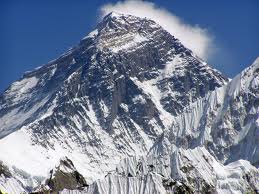Nepal , officially the Federal
Democratic Republic of Nepal, is a landlocked country
in South Asia and the
world's youngest republic.
It is bordered to the north by the People's Republic of China, and to the south,
east, and west by the Republic of India. With an area of 147,181 square
kilometres (56,827 sq mi) and a population of approximately 30
million, Nepal is the world's 93rd largest country by land mass and the 41st
most populous country. Kathmandu
is the nation's capital and the country's largest metropolitan city.
By some measures, Hinduism is
practised by a larger majority of people in Nepal than in any other nation. Buddhism, though a
minority faith in the country, is linked historically with Nepal as the
birthplace of Siddhartha Gautama, who as the Buddha Gautama gave birth to
the Buddhist tradition. About half of the population live below the
international poverty line of US$1.25 a day.
A monarchy
throughout most of its history, Nepal
was ruled by the Shah
dynasty of kings from 1768, when Prithvi Narayan Shah unified its many small kingdoms. However,
a decade-long People's Revolution by the Communist Party of Nepal (Maoist) along with
several weeks of mass protests by all major political parties of Nepal in 2006,
culminated in a peace accord and the ensuing elections for the constituent assembly voted overwhelmingly in favor of the
abdication of the last Nepali monarch Gyanendra Shah and the establishment of a federal democratic republic in May 28, 2008. The first President of Nepal, Ram Baran Yadav,
was sworn in on 23 July 2008.




.jpg)

.jpg)




.jpg)
.jpg)
.jpg)
.jpg)
.jpg)
No comments:
Post a Comment